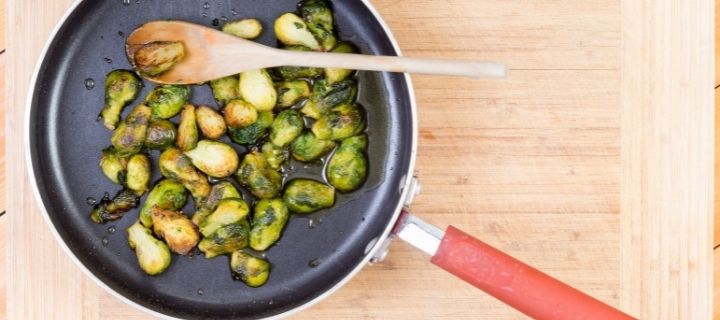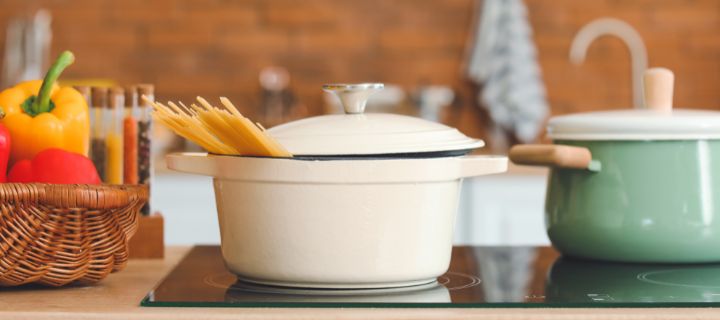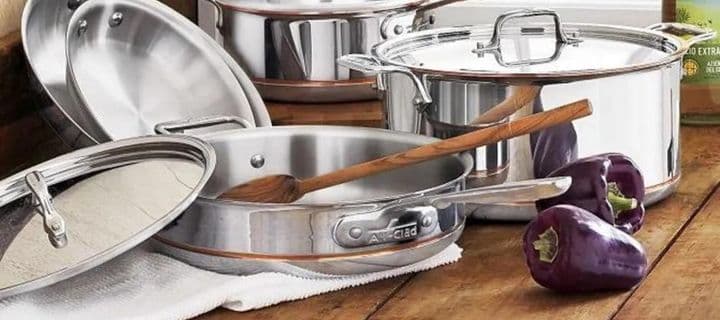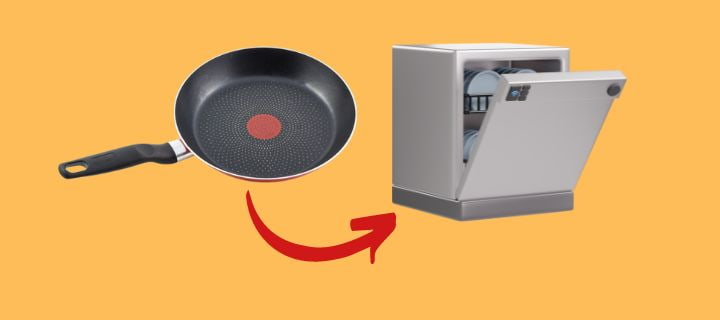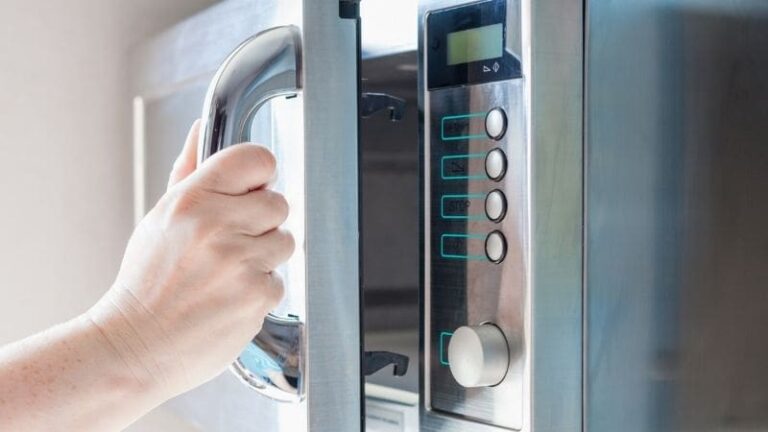In the world of cooking, non-stick pans are a game-changer. They make flipping pancakes a breeze, searing delicate fish effortless, and cleaning up a snap.
However, to truly reap the benefits of non-stick cookware and extend its lifespan, you need to know how to use non stick pan and care for it properly.
In this article, I’ll walk you through essential tips for cooking with non-stick pans and maintaining their non-stick prowess.
Whether you’re a seasoned chef or a beginner in the kitchen, these insights will help you make the most out of your non-stick pan and elevate your culinary creations.
Let’s get started!
What is non-stick pan’s coating made of?
Non-stick coatings are made of various materials, but the most common is Teflon. Teflon is a brand name for a type of polymer known as polytetrafluoroethylene (PTFE).
PTFE is made of carbon and fluorine atoms, and it’s this combination that makes it so slippery.
PTFE is non-toxic and very stable, meaning it doesn’t react with other substances and doesn’t break down over time. This makes it a good choice for a non-stick coating.
What makes non-stick coatings so slick is that they contain very thin layers of PTFE. The most common type of non-stick coating, Teflon, contains a layer of PTFE about 0.0004 inches thick.
If you’re like most people, you probably use a standard nonstick pan in your kitchen.
How to use Non-stick Pan Properly?
Most people don’t know how to use a nonstick pan properly so they end up with a ruined pan.
Related Post: How To Restore Non-stick Pan
If you want to get the most out of your nonstick pan, here are some tips on how to use it properly.
1. Don’t use too much heat.
If you use too much heat, the food will stick to the pan and it will be hard to clean. Also, High heat can damage the coating on the pan and make it less effective. The best way to use a nonstick pan is always to use low or moderate heat.
2. Don’t use metal utensils
Metal utensils can scratch the surface of the pan and make it less non-stick. Use wooden or plastic utensils instead.
3. Don’t overcrowd the pan
If you put too much food in the pan, it will steam and the food will stick. So, make sure to cook in batches if necessary.
4. Don’t store the pan with food in it
If you leave food in the pan, it will start to stick and it will be hard to clean. So, make sure to empty the pan before storing it.
5. Don’t wash the pan with harsh detergents
Harsh detergents can damage the nonstick coating. Use mild soap and water instead.
6. Don’t put the pan in the dishwasher.
The high temperatures in the dishwasher can damage the nonstick coating. I have seen many nonstick brands that say their pans are dishwasher-safe but I would still hand-wash them just to be safe.
7. Do season the pan before use
If you season the pan before use, it will help to create a nonstick surface. Seasoning is simply heating up the pan and then coating it with a thin layer of oil. This should be done every few months or so.
How to Cook with a Non-Stick Pan
Non-stick pans are a kitchen essential for many reasons. They are easy to use and make cleanup a breeze. Here are some tips for getting the most out of your non-stick pan.
1. Make sure your pan is hot before adding oil or butter. This will help to prevent sticking.
2. Don’t overcrowd your pan. This will also cause sticking.
3. Use a non-stick cooking spray if you are cooking something sticky like eggs.
4. Don’t use metal utensils with a non-stick pan, as they can damage the coating. Use silicone or wooden utensils instead.
5. Never put a cold pan in the oven – always preheat it first!
How to take care of non stick pans?
To take care of your nons-tick pan, here I will give you few tips:
- Avoid using metal utensils: Metal utensils can scratch the non-stick coating, causing it to lose its non-stick properties. Instead, use wooden, silicone, or nylon utensils.
- Use low or medium heat: High heat can damage the non-stick coating and cause it to deteriorate. Use low to medium heat to avoid damaging the pan.
- Do not overheat the pan: Overheating can cause the non-stick coating to break down, resulting in food sticking to the pan. If you are using oil, wait for it to heat up before adding the food.
- Clean the pan properly: After use, clean the pan with a soft sponge or dishcloth and mild dish soap. Do not use abrasive sponges or scouring pads, as they can scratch the non-stick coating.
- Store the pan properly: Do not stack non-stick pans on top of each other, as this can scratch the coating. Instead, place a paper towel or cloth between each pan to protect the surface.
How long should non stick pans last?
The lifespan of a non-stick pan can vary depending on various factors such as usage, maintenance, quality, and type of coating. Generally speaking, a well-maintained high-quality non-stick pan can last between 3-5 years or longer.
Here’s the logic behind this estimate:
Usage
The more frequently you use a non-stick pan, the faster it will wear out. Over time, the surface can become scratched or worn down, which can reduce its effectiveness. Additionally, if you use high heat, acidic or abrasive ingredients, it can also damage the non-stick coating.
Maintenance
Proper maintenance can extend the life of a non-stick pan. Avoid using metal utensils, which can scratch the surface. Instead, use wooden, silicone or plastic utensils.
Additionally, avoid washing non-stick pans in the dishwasher as the harsh detergents and high temperatures can damage the coating. Instead, hand wash with warm, soapy water and a soft sponge.
Quality
The quality of a non-stick pan can also affect its lifespan. Higher quality pans typically have thicker coatings, which can make them more durable. Additionally, some brands offer warranties on their non-stick pans, which can be an indication of their quality and durability.
Type of coating
There are different types of non-stick coatings, including ceramic, PTFE, and diamond-infused coatings. The durability of each coating can vary, with some being more durable than others. For example, diamond-infused coatings are known for their durability and can last longer than other coatings.
How to Clean a Non-Stick Pan
Non-stick pans are a great kitchen tool, but they can be difficult to clean if not done correctly.
The first step is to make sure that the pan is cool to the touch. If it is still hot, let it cool down before you begin cleaning.
Next, use a soft sponge or cloth to clean off any food or grease. Do not use abrasive materials such as steel wool, as this can damage the non-stick coating.
If there are any stubborn spots or residues, you can use a gentle scrubbing agent like baking soda.
Finally, rinse the pan with hot water and dry it off with a soft cloth.
How to Season a Non-Stick Pan
To keep your non-stick pan in a good condition for a longer time period it’s very important to season it properly.
Here are three simple steps to follow:
1. Start by heating the pan on medium heat until it’s hot.
2. Add a tablespoon of vegetable oil and swirl it around the surface of the pan.
3. Turn off the heat and let the pan cool completely. then repeat these steps two or three times.
How long do teflon pans last?
The lifespan of a Teflon pan can vary depending on several factors, such as how often it’s used, how it’s cared for, and the quality of the pan.
Generally, a Teflon-coated pan can last anywhere from one to five years with proper care and use.
However, it’s important to note that Teflon can start to break down over time, particularly if it’s exposed to high heat or scratched with metal utensils, which can shorten the lifespan of the pan.
To extend the life of your Teflon pan, it’s best to use non-metal utensils, avoid using high heat, and hand wash the pan with a soft sponge or cloth.
Additionally, if you notice any signs of wear and tear, such as flaking or peeling, it’s important to replace the pan to avoid any potential health hazards.
Can you use metal utensils on nonstick pans?
It is generally not recommended to use metal utensils on nonstick pans because they can scratch or damage the nonstick coating, which can reduce the effectiveness of the pan and cause it to wear out more quickly.
Instead, it is best to use utensils made from materials that are less likely to damage the nonstick surface, such as wood, silicone, or plastic. These types of utensils are gentler on the pan and will help to prolong its lifespan.
If you do accidentally scratch your nonstick pan with a metal utensil, it is important to stop using it immediately and inspect the surface for damage. If the damage is significant, it may be time to replace the pan to ensure that it remains safe to use.
Troubleshooting a Non-Stick Pan
If you’ve ever used a non-stick pan, you know the convenience and ease of use it offers.
Non-stick pans are notorious for being easy to clean and resistant to sticking, making them a popular choice for busy cooks.
But, if something goes wrong with your non-stick pan, don’t worry – we’ve got you covered.
Let’s dig in-depth about troubleshooting a non-stick pan:
1. Nonstick pans are manufactured from a variety of materials. How do I know if my pan is non-stick?
The first thing you should do when suspecting your non-stick pan is damaged is contact the manufacturer.
Non-stick pans are either made of synthetic ceramic or iron oxide (usually with a steel core).
Even if your pan is not made of one of these materials, it may still be resistant to sticking because the coating was designed to prevent sticking.
2. I’ve heard that nonstick pans are manufactured for the oven. Why can’t I use my pan in the oven?
Because your nonstick pan is manufactured for stovetop use, it cannot withstand temperatures over 500 degrees Fahrenheit or 220 degrees Celsius.
3. How can I tell if my nonstick pan is scratched?
Scratches and nicks in the finish are usually a sign that the coating has worn off, leaving the pan vulnerable to scratching and chipping.
4. How can I tell if my nonstick pan is damaged?
Damage to the surface of a nonstick pan can usually be seen as a result of scratching or chipping, though it may also appear as a result of food sticking to the surface.
Conclusion:
A nonstick pan is a valuable kitchen appliance, and with proper care, it can last for years.
To keep your nonstick pan in good condition, be sure never to use metal utensils on it (use plastic or silicone instead), and avoid using high heat, if you want to then here are some nonstick pans that you can use for high heat cooking.
Wash it by hand with warm water and a mild detergent, and dry it thoroughly after each use. If your nonstick pan starts to lose its coating, stop use and replace it.
Hope the article helped you.
What’s Next?
Read More: Our Helpful Guides Related To Pan

